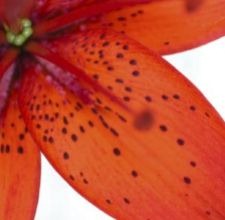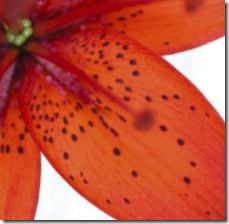The lily leaf beetle (Lilioceris lilii) has only been a problem for gardeners since 1992 when the insect first appeared in gardens in Cambridge, Massachusetts. Before its introduction in the United States, the beetle was only a problem in Montréal since it appeared there from Europe in 1945, according to the University of Rhode Island website. Unfortunately, this bright red beetle can do great damage to garden lilies and should be controlled.
Identification
-
Lily leaf beetles are scarlet beetles with black undersides and black legs, head and antennae. They look, in the words of one expert, like a "narrow ladybug without spots." The bugs are about ¼ to 3/8-inch long and they will actually let out a squeak if squeezed, according to the University of Rhode Island website.
Larvae
-
The larvae of the lily leaf beetle look like slugs with black heads. According to URI’s website, they secrete and carry their excrement on their backs, making them even less attractive than their slug-like appearance. The larvae are capable of doing more damage than the adults. They emerge from their eggs after seven to 10 days of incubation.
Damage
-
The beetles and their larvae eat leaves, buds, flowers and stems; no part of the plant is safe from attack. They prefer to lay eggs on plants of the genus Lilium, but may also lay on some species of Fritillaria, according to the University of Rhode Island website. These beetles are strong fliers and can easily make their way over to your vegetable garden where they’ll attack tomatoes, peppers, potatoes and eggplants.
Control
-
Handpick the adults and eggs. If you don’t mind handling larval excrement, go right ahead and handpick the larvae. too — it might help to wear gloves. You’ll have to keep a vigilant outlook for these pests. Since their arrival in Cambridge, Massachusetts, in 1992, they have spread to the West and South. According to a fact sheet published by the University of Rhode Island in 2002, "the infested area in the USA reaches into all of the New England states, including southern Connecticut and northern Vermont." If handpicking the bugs, their eggs or larvae isn’t all that appealing to you, consider applying all-natural neem oil as an insecticide.


Deprecated: strpos(): Passing null to parameter #1 ($haystack) of type string is deprecated in /home/agriviek8Qv/agriviet.net/public_html/wp-includes/comment-template.php on line 2522